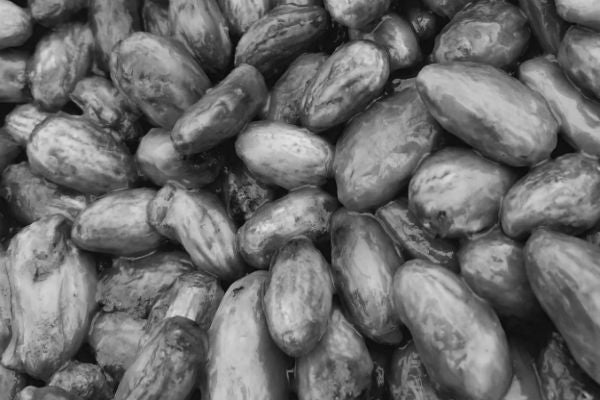
Cacao 102: All the basics you need to know
In this second and final article about essential cacao information, we will be discussing the different cacao varietals. As mentioned in the Cacao 101 article, initially, cacao pods were divided into three main categories.
First, "Criollo" cacao, which is recognized, in general, as very high-quality cacao. Its world production is minimal corresponding to less than 5%, and its pods can be red, yellow, green, and even white as in the famous "Porcelana" cacao. They are known to be the "beans with flavor," and their pulp tends to be light purple or white. Currently, they grow in the northern part of South America as well as some Central America regions.
Second, cacao "Forastero," the most widely produced and used variety corresponding to 70% or more in the world. The pods are round with a smooth surface, and the color ranges from red, orange, yellow to purple. Inside, the beans are commonly dark purple. One of the reasons for this variety to be so dominant is its resistance to diseases as well as its productivity, i.e., many more pods for each tree. We can say that this variety, commonly named "bulk cacao," is the primary source for most industrial chocolates currently produced. Cacao farmers prefer this tree because its resistance allows them to have more consistent harvesting seasons despite weather changes and diseases; they might spare quality and flavor for better production in volume.
Third and last is cacao "Trinitario," 25% of the world's crop. It is considered to be a hybrid between the two above, possibly originated in the Island of Trinidad, east of Venezuela, hence its name. The flavor profile is better than Forastero cacaos, and its farming has expanded in the world especially in the South East Asia region.
Nowadays we know that the above classification is a very simplistic way of dividing cacao. It was convenient at the time of Spanish colonization of America, but it does not reflect the genetic, and therefore different profiles and quality of cacao beans. For instance, there are "Criollo" cacao beans, famous for excellent quality and flavor, that are not harvested, fermented, and dried correctly, and they end up being of poor quality. Also, there could be many "Forastero" beans, part of what is currently labeled "bulk" cacao, which has excellent genetics and receives proper processing techniques that can result in good quality beans for gourmet chocolate making.
In the last few years, cacao and artisan chocolate experts have been studying to determine what cacao beans have a good genetic profile, as well as recognize those which are appropriately processed. Recently, the cacao genome (genetic profile) was fully decoded and resulted in 10 different large groups or cacao varietals. Additionally, the Heirloom Cacao Preservation Initiative by the Fine Chocolate Industry Association recognizes cacao beans with "historic, cultural, geographic, botanical, and most of all aromatic value." They are trying to "identify and preserve the cacao beans with a fine aroma, preserve the biologic diversity of these cacaos, and empower the cacao farmers who cultivate them."**
We hope you now have good basic knowledge about cacao and share it with your friends and relatives.
References:
- Presilla, M. (2009). "The New Taste of Chocolate: A Cultural and Natural History of Cacao with Recipes." Chapter: "A Natural and Cultural History of Chocolate" pages 28-56.
**http://www.finechocolateindustry.org/hcp






